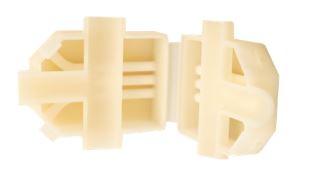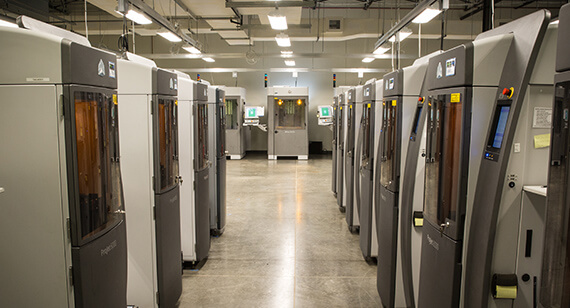Polypropylene 3D Printing
3D-printed polypropylene is a lightweight material, flexibility, durability, and chemical resistance

We offer one true polypropylene and two polypropylene-like 3D printing materials. Each type of polypropylene offers unique benefits:
- Polypropylene Natural: This material is a true polypropylene. It offers chemical resistance properties that are top among the SLS and MJF material offerings. This tough and durable, yet flexible, material offers resistance to most acids and is a low weight material option.
- PP-Like Translucent White (Somos 9120): This SLA material is translucent in appearance and a semi-flexible.In direct comparison to the average values of an injection-molded polypropylene, 9120 has similar tensile strength, tensile modulus, flexural modulus, and impact strength.
- Carbon FPU 50: This Carbon material exhibits PP-like properties. It has the highest elongation of any of our 3D-printed resins at 200%, making it the most flexible PP-like .
Compare Polypropylene Material Properties
| Material | 3D Printing Process | Color | Tensile Strength | Tensile Modulus | Elongation |
|---|---|---|---|---|---|
| Polypropylene Natural | SLS | White | 2.61 ksi | 123 ksi | 15% |
| PP-Like Translucent White (Somos 9120) |
SLA | Translucent/Clear | 5.0 ksi | 232 ksi | 25% |
| Carbon FPU 50 | Carbon | Black | 4 ksi | 100 ksi | 200% |
| Material | 3D Printing Process | Color | Tensile Strength | Tensile Modulus | Elongation |
|---|---|---|---|---|---|
| Polypropylene Natural | SLS | White | 18 MPa | 848 MPa | 15% |
| PP-Like Translucent White (Somos 9120) |
SLA | Translucent/Clear | 34.5 MPa | 1,600 MPa | 25% |
| Carbon FPU 50 | Carbon | Black | 27.6 MPa | 690 MPa | 200% |
Applications for 3D-Printed Polypropylene
This general purpose material is well suited for parts in industries such as medical and automotive. It's frequently selected for:
- Medical devices
- Electrical casings
- Fluid flow analysis parts
- Automotive parts








